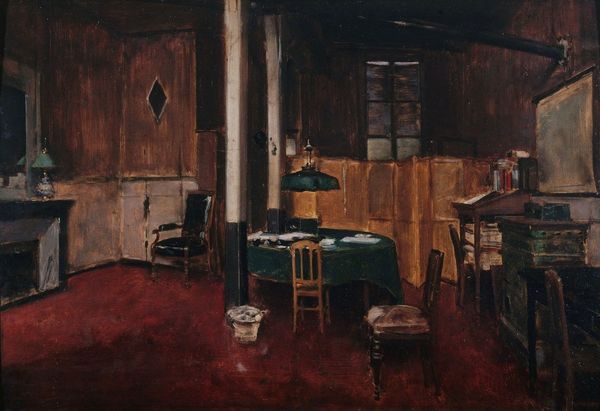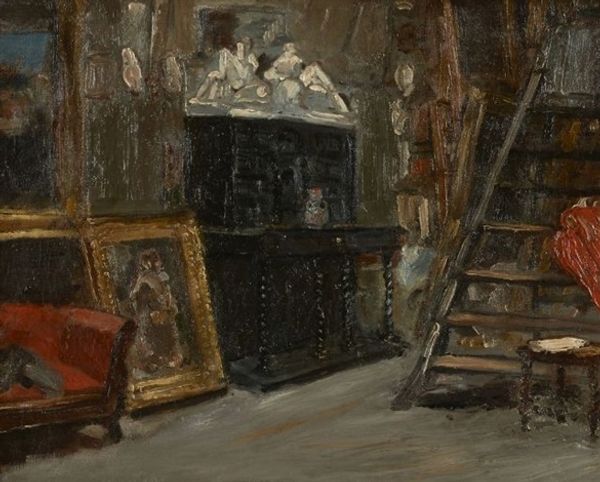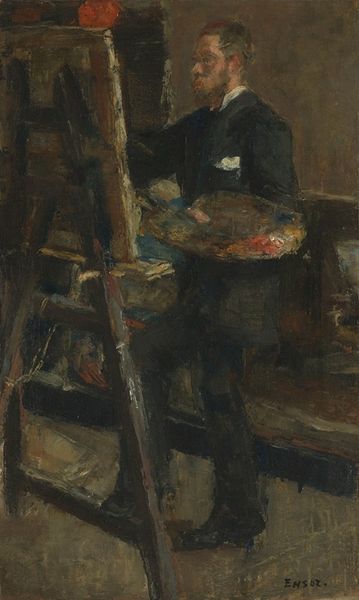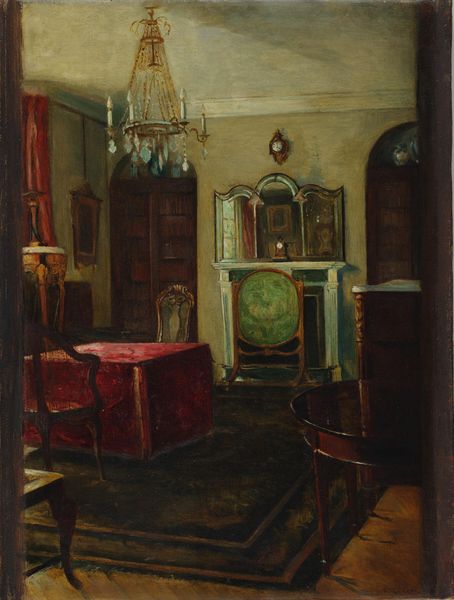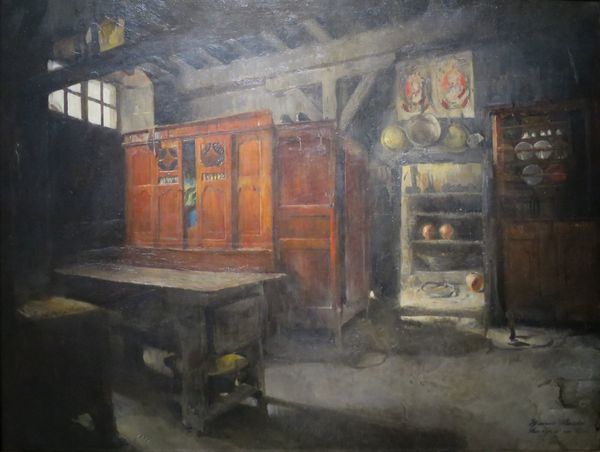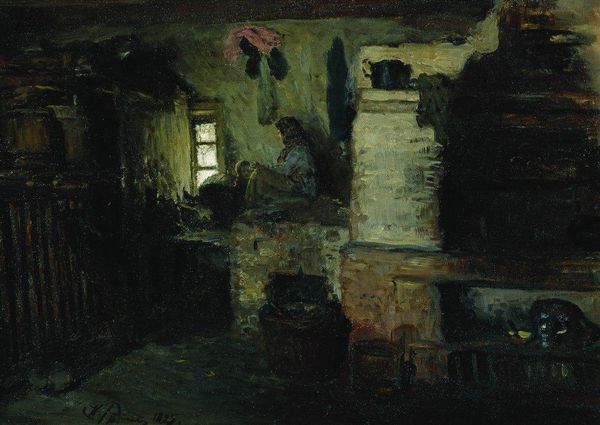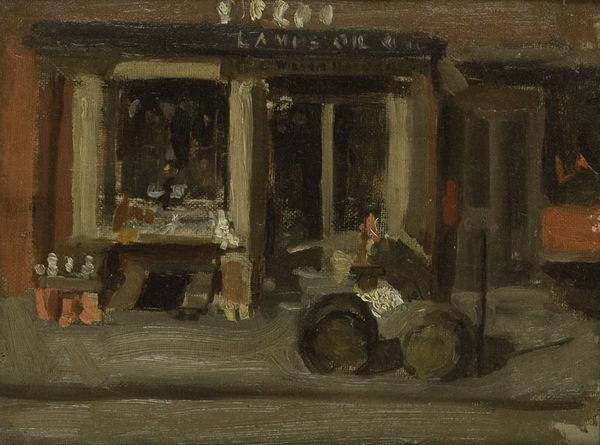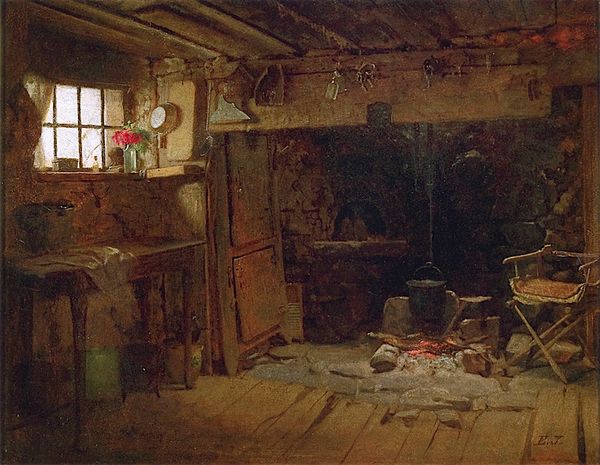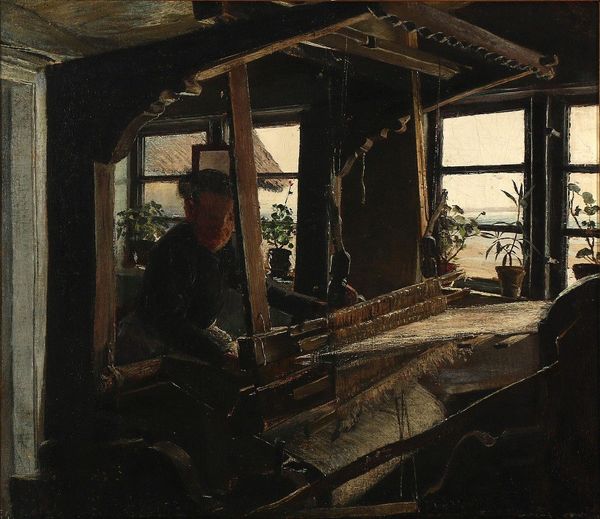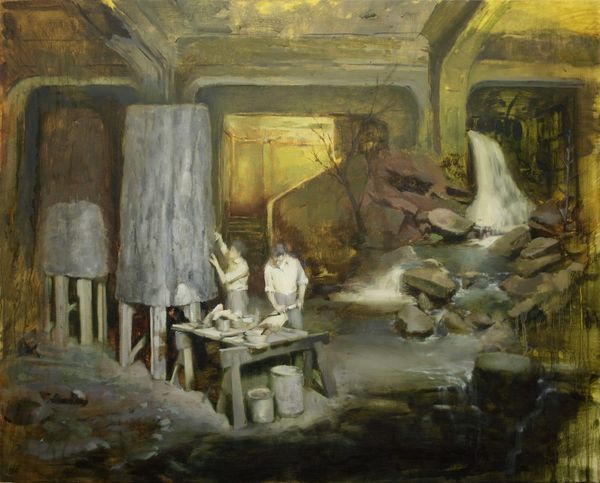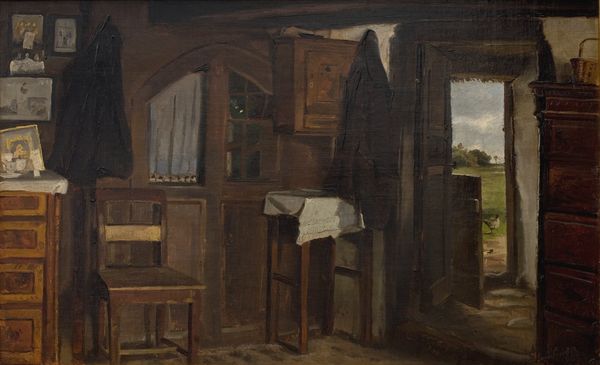
oil-paint
#
neoclassicism
#
oil-paint
#
oil painting
#
genre-painting
#
realism
Copyright: Public Domain: Artvee
Curator: What strikes you most about this scene, Editor? The painting, entitled "Corner Of A Room With Tiled Stove" by Albrecht Anker, presents a quaint domestic space. Editor: Immediately, it’s the quietude. The almost palpable sense of stillness, broken only by the implied tick of the clock on the wall. It’s intimate, yet somewhat melancholic. Curator: Indeed. Anker was a key figure in Swiss Realism, capturing the everyday lives of ordinary people with acute attention to detail. Here, he shows us not grand gestures or historical narratives, but the simple reality of a humble interior. We must consider the public image of home, domesticity, and safety at this time. Editor: The focal point has to be the tiled stove. Its bright, almost jewel-toned green draws the eye in, contrasting sharply with the muted browns and creams that dominate the rest of the scene. Was this sort of stove common then? Is there any kind of political intention present in depicting the life of common people so honestly? Curator: Tiled stoves were indeed a common feature in many European homes, offering a source of heat. Anker's choice to depict it so prominently reflects a growing interest in representing the lives of the working classes. Genre paintings like this offered a glimpse into the reality of daily existence for many who were not part of the upper echelons of society. These intimate scenes often served to shape ideas of national identity. Editor: Looking at the bare walls and sparse furnishings, you also get a strong sense of the economics at play. How poverty impacts a society in overt and subtle ways. Also, it makes me wonder who lived in this space, what was their labor and what gendered constraints were placed on that labor? It has that direct connection to the artist, as Anker often made it his business to create these works to bring these issues to light. Curator: Yes, but also it humanizes the inhabitants rather than objectifying. Anker presents us with dignity and respect, inviting contemplation on our shared humanity. Editor: Right, that makes sense to me, thanks for providing that context! It’s this interplay of the personal and the political, isn't it? The artist’s vision shapes a viewer's understanding of a complex time. Curator: Precisely. I am seeing, reflecting through your contemporary lenses, the past and future that this artwork holds.
Comments
No comments
Be the first to comment and join the conversation on the ultimate creative platform.
